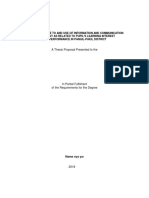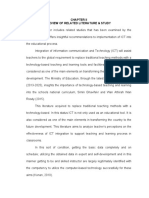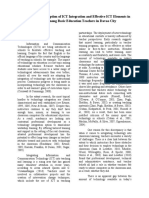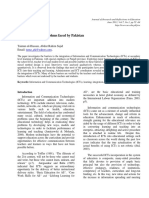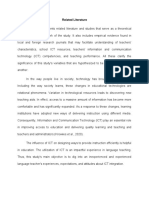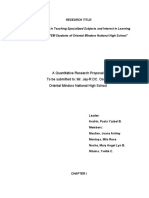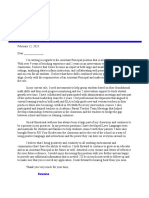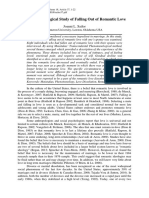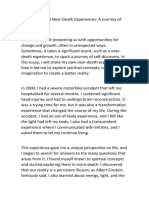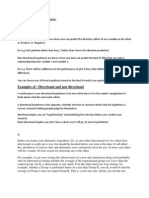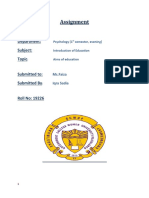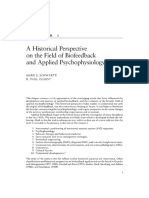0% found this document useful (0 votes)
14 views19 pagesResearch Paper
This research proposal examines the effectiveness of ICT integration in teaching and learning at Nabasan Elementary School, emphasizing the importance of technology in modern education. It aims to analyze various technology-based learning approaches and their impact on student achievement while utilizing frameworks like TPACK and the Ecological Systems Theory to understand the interplay of factors affecting academic performance. The study highlights the need for continuous professional development for teachers to effectively integrate ICT into their teaching practices.
Uploaded by
cheryljane.musaCopyright
© © All Rights Reserved
We take content rights seriously. If you suspect this is your content, claim it here.
Available Formats
Download as DOCX, PDF, TXT or read online on Scribd
0% found this document useful (0 votes)
14 views19 pagesResearch Paper
This research proposal examines the effectiveness of ICT integration in teaching and learning at Nabasan Elementary School, emphasizing the importance of technology in modern education. It aims to analyze various technology-based learning approaches and their impact on student achievement while utilizing frameworks like TPACK and the Ecological Systems Theory to understand the interplay of factors affecting academic performance. The study highlights the need for continuous professional development for teachers to effectively integrate ICT into their teaching practices.
Uploaded by
cheryljane.musaCopyright
© © All Rights Reserved
We take content rights seriously. If you suspect this is your content, claim it here.
Available Formats
Download as DOCX, PDF, TXT or read online on Scribd
/ 19

